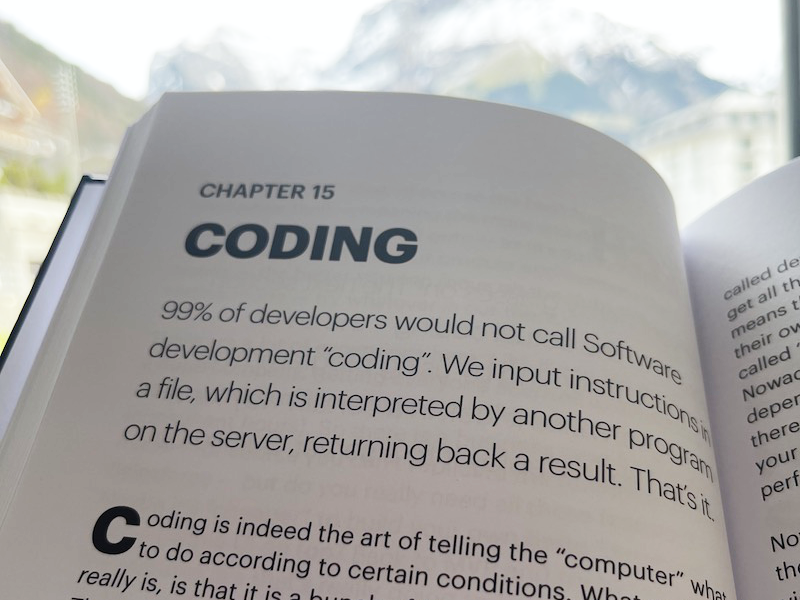
We input instructions in a file, which is interpreted by another program on the server, returning back a result. That’s it. Coding is indeed the art of telling the “computer” what to do according to certain conditions.
What coding really is, is that it is a bunch of 1’s and 0’s in a long stream. The processor reads these binary codes like “on” and “off” and performs computation based on what the binary code means.
Each of these 1’s and 0’s are called “bits” and they can be grouped in sections of 8 which are called “bytes”.
It’s important to understand this, as we are not really “coding” binary strings. We are instructing a program to give us a certain results. There are some layers of code interpreters that does the heavy lifting of translating this down to the processor. Let’s leave that right there.
When we are talking about coding, developers have installed a so called development environment on their computers. They get all the folders and files from a “git repository” which means they can download all the code of the product to their own computer.
They view the files and edit them in so called “IDE’s” (Integrated Development Environments). Nowadays they may not be so integrated anymore, as depending on which programming language you work with, there may be many things you need to have installed on your computer to make it possible to run and see the code performing what you told it to in a web browser.
Now that the developers can see all their files, they can edit them and see the result. This is the process of coding. Let’s visualise one simple example. In the url field of the web browser, there are sometimes many things after the url.
Like https://awesome.com/?message=hello. We can tell the program to use the variable “message” and display (“print”) the contents:
If ($message) {
echo $message;
}
Read more in "The CTO Playbook" available on Amazon/Kindle.
We are a Swiss Company (LLC) based in  Switzerland.
Switzerland.
